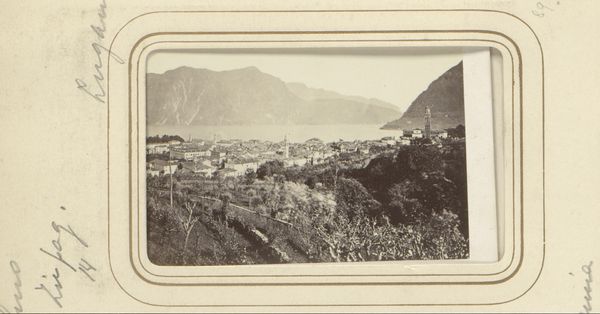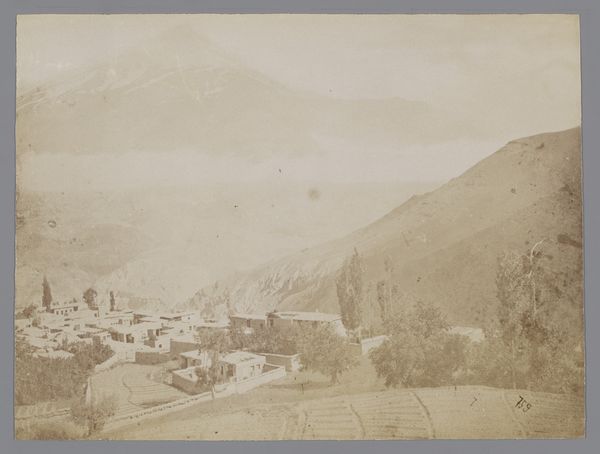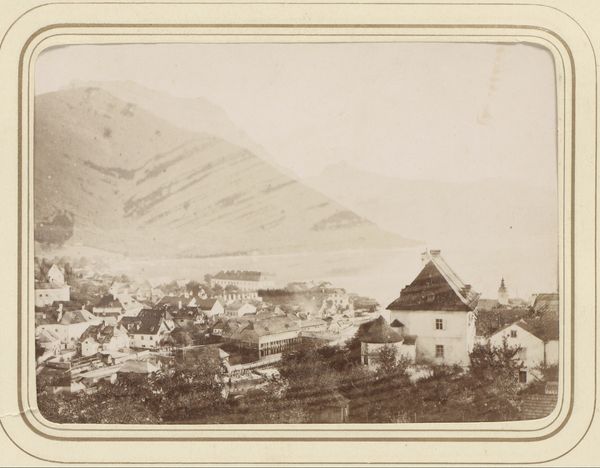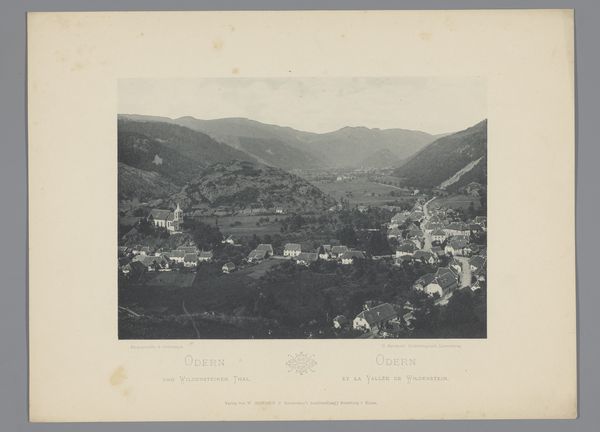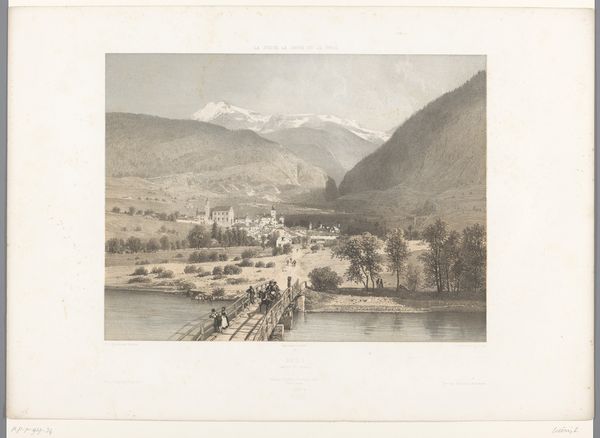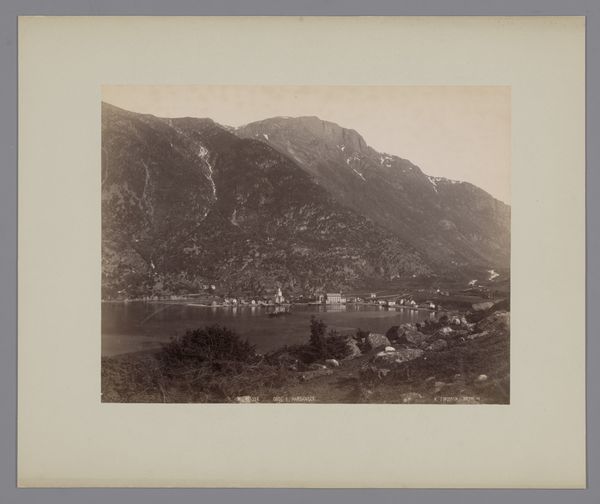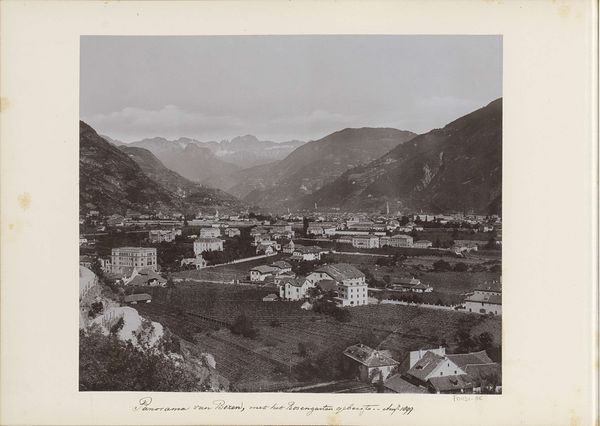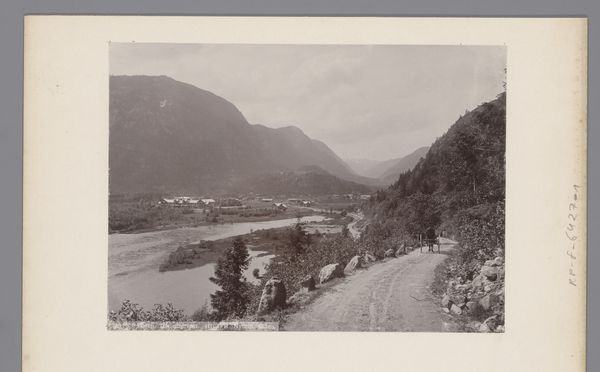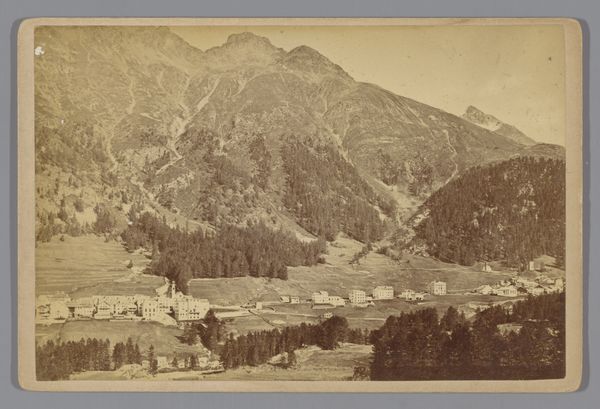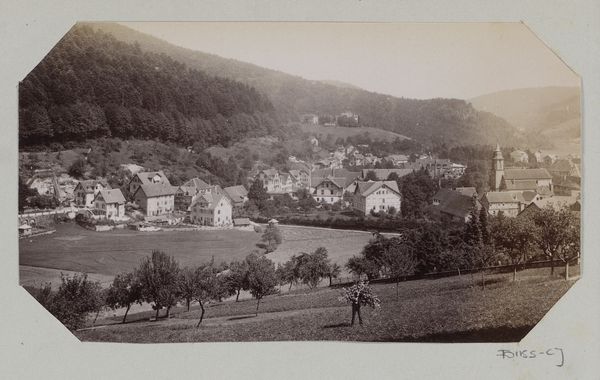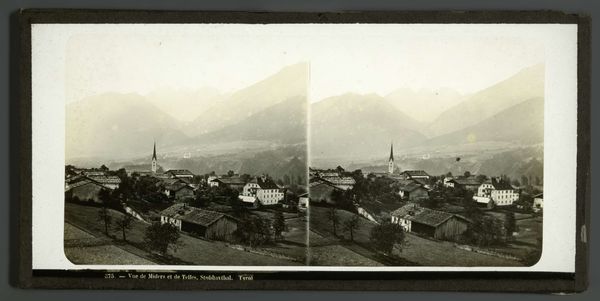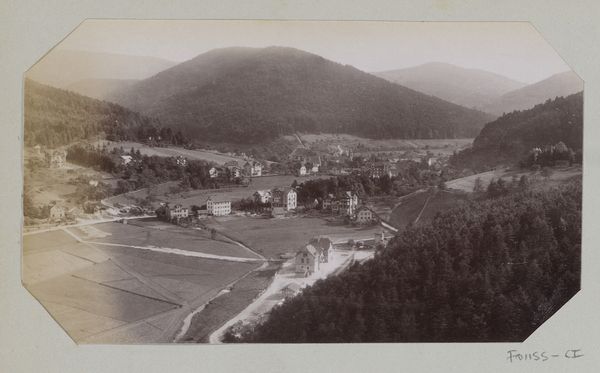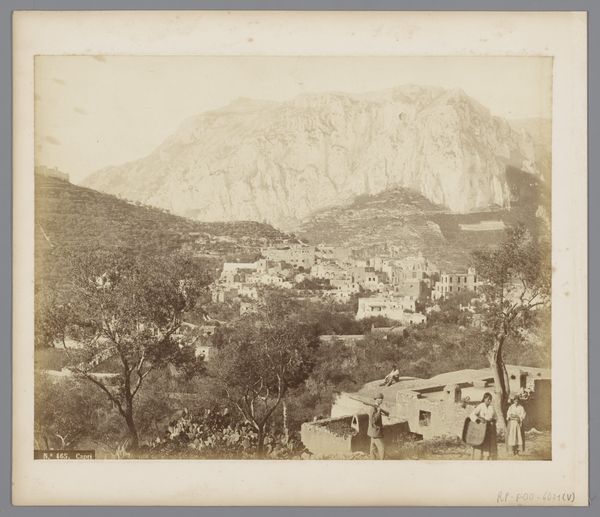
photography, albumen-print
#
muted colour palette
#
pictorialism
#
landscape
#
river
#
photography
#
mountain
#
cityscape
#
watercolor
#
albumen-print
Dimensions: height 199 mm, width 252 mm
Copyright: Rijks Museum: Open Domain
Editor: Here we have Giorgio Sommer's "View of Interlaken and the Jungfrau, Switzerland," created sometime between 1900 and 1930 using the albumen print process. I'm immediately drawn to its serene, almost dreamlike quality. How would you interpret this work? Curator: I see an object deeply rooted in its historical means of production. Albumen prints like this one required a skilled artisan— someone who could manipulate egg whites, silver nitrate, and light. The choice of albumen wasn't just aesthetic; it was about achieving a certain sheen and clarity, a specific kind of visual commodity valued at the time. What does it mean that a photograph intended for mass consumption relies so heavily on such meticulous, often invisible labor? Editor: That's fascinating. I hadn't thought about the labor aspect. So, it's not just about the pretty landscape; it's about the industrial process behind creating the image? Curator: Precisely! The idyllic scene—mountains, water, tidy town—becomes secondary to the economic and social forces that made its production possible. Who were the consumers of these images, and what was their relationship to the landscapes depicted? The materiality tells a story of class, leisure, and the industrialization of art. The repetitive labour to generate the picture compared to the ‘natural beauty’ which sells, the process vs subject. Editor: I see! It highlights the contrast between the marketed image of untouched nature and the very industrial method used to capture and distribute it. Is the intention more relevant than the object itself? Curator: In a way, yes. It encourages us to examine the layers of meaning embedded in the materials themselves, and how they shaped the reception of such images at the turn of the century. Editor: That gives me a lot to consider regarding how photography at the time wasn't inherently an egalitarian medium as photography can be now due to materials limitations, requiring specialized labour and technical skills. Thank you! Curator: Absolutely. Reflecting on production transforms how we consider photographic art, especially with modern consumption habits in mind.
Comments
No comments
Be the first to comment and join the conversation on the ultimate creative platform.
